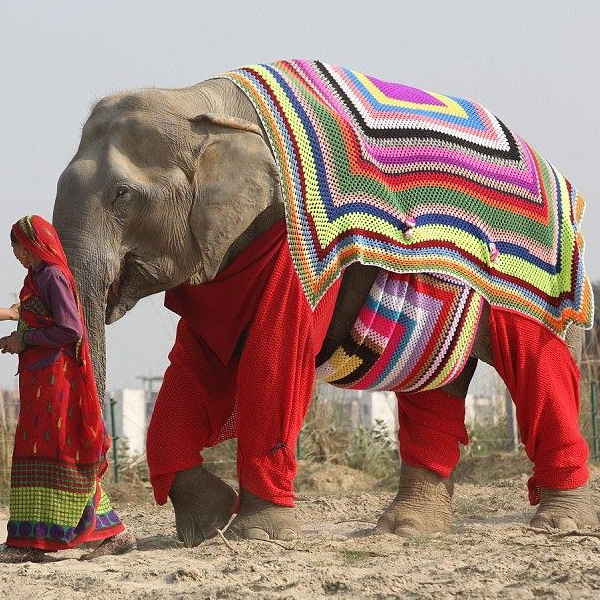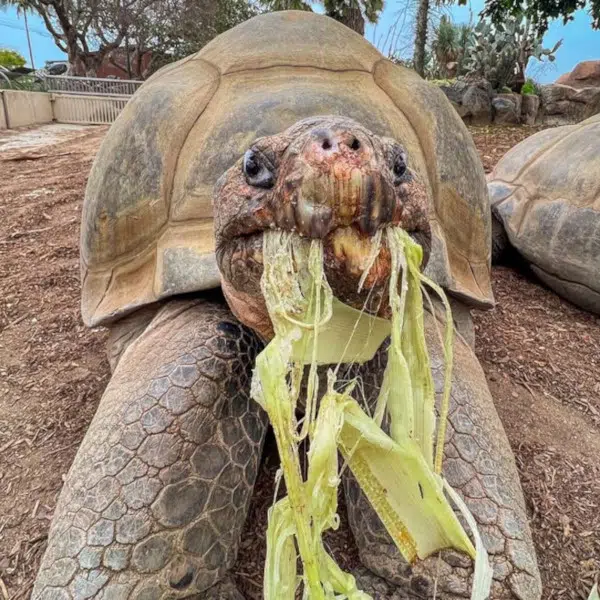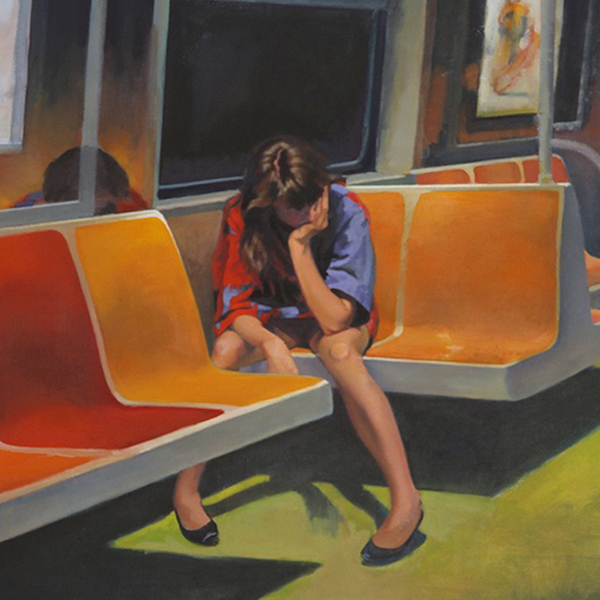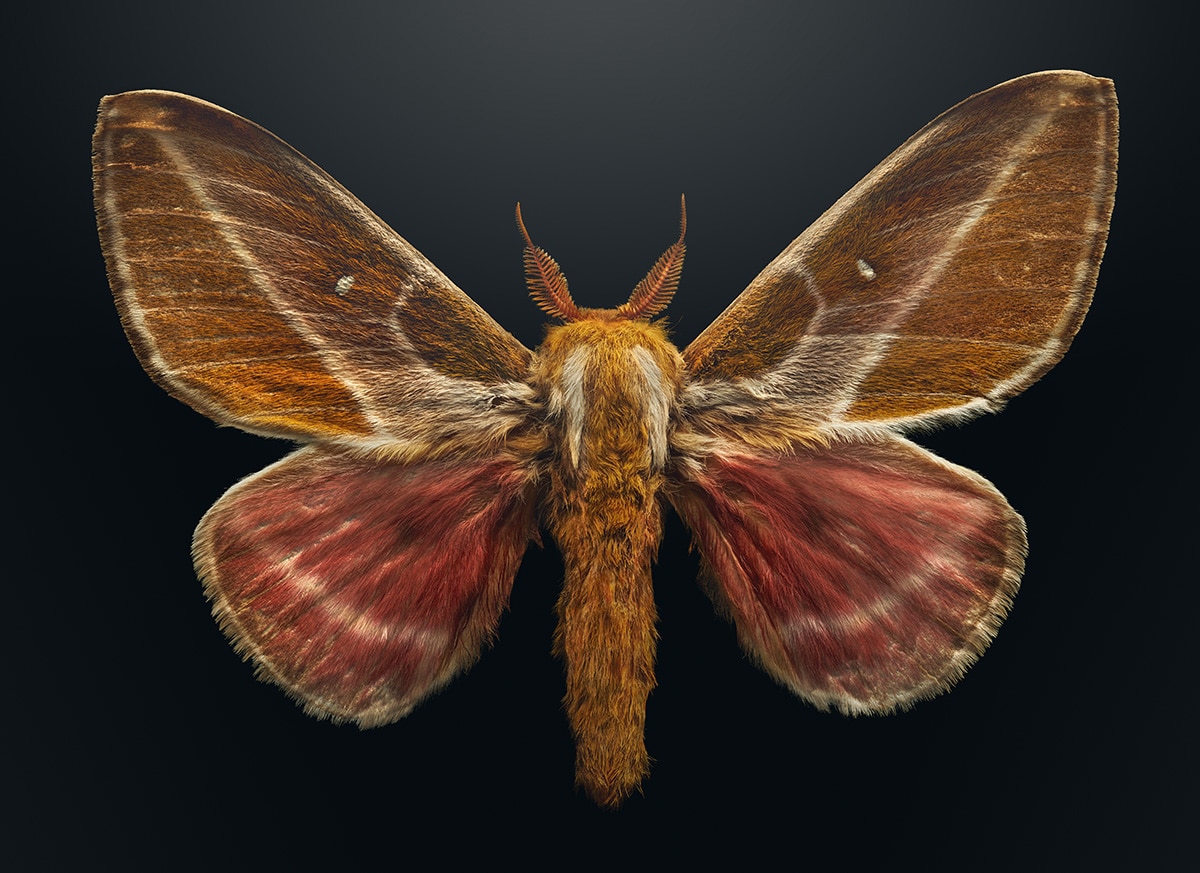
Sphingicampa raspa (Raspa silkmoth)
For three years, British photographer Levon Biss worked tirelessly to capture every hair, feature, and fiber of rare insects from the American Museum of Natural History's collection. Known for his ability to bring out their beauty with his macro photography, Biss's meticulous method of photographing the specimens has culminated in the Extinct and Endangered exhibition. This ongoing exhibit at the American Museum of Natural History shows all 40 of Biss's photographs and encourages the public to gain a new appreciation for these insects.
Over 10,000 individual images are used in each photo as Biss spends weeks photographing every part of the specimen. The insects, selected for their conservation status, habitat, and order, weave a tale about the fragile state of the world's insect population. Though vital to humans, insects are often underappreciated and misunderstood. And, unfortunately, this can result in great harm to insects that play a vital role in the ecosystem.
By highlighting their diversity and allowing the public to drink in the rich details of these insects, Biss is hoping to use his artistic skills to enact change. We had the opportunity to speak with Biss about why insects inspire him, how he went about photographing the specimens, and what the public can do to change the fate of these insects. Read on for My Modern Met's exclusive interview and check out all the images on the Extinct and Endangered website.
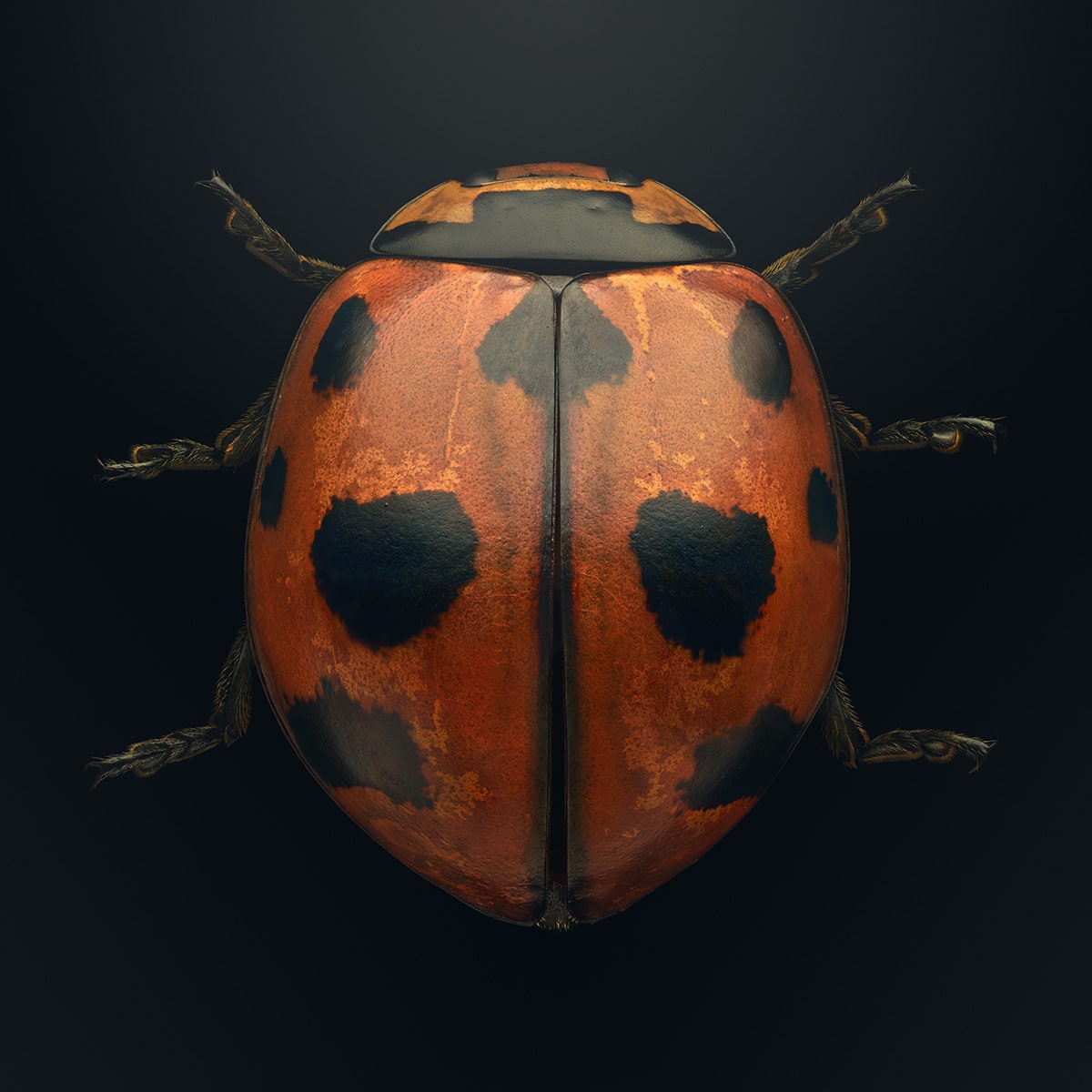
Coccinella novemnotata (Nine-spotted ladybug)
I know that you were initially drawn to macro photography after your son found an insect in the backyard and you looked at it under a microscope. Can you share what that moment felt like when you viewed it and how that translates into what you are currently doing?
I remember quite clearly the first time I viewed an insect under a microscope. I had the feeling of entering an entirely new world. I was viewing something for the very first time, and it was intricate, mechanical, and beautiful. I felt as though I had just opened a treasure chest of photographic material, and I just couldn't wait to explore the insect world further. A decade on, I still feel the same way today, which does surprise me. I continue to be inspired by insects for many reasons. They are visually interesting, they are functional, and they are diverse in design. They are many things, but every new insect I photograph teaches me more.
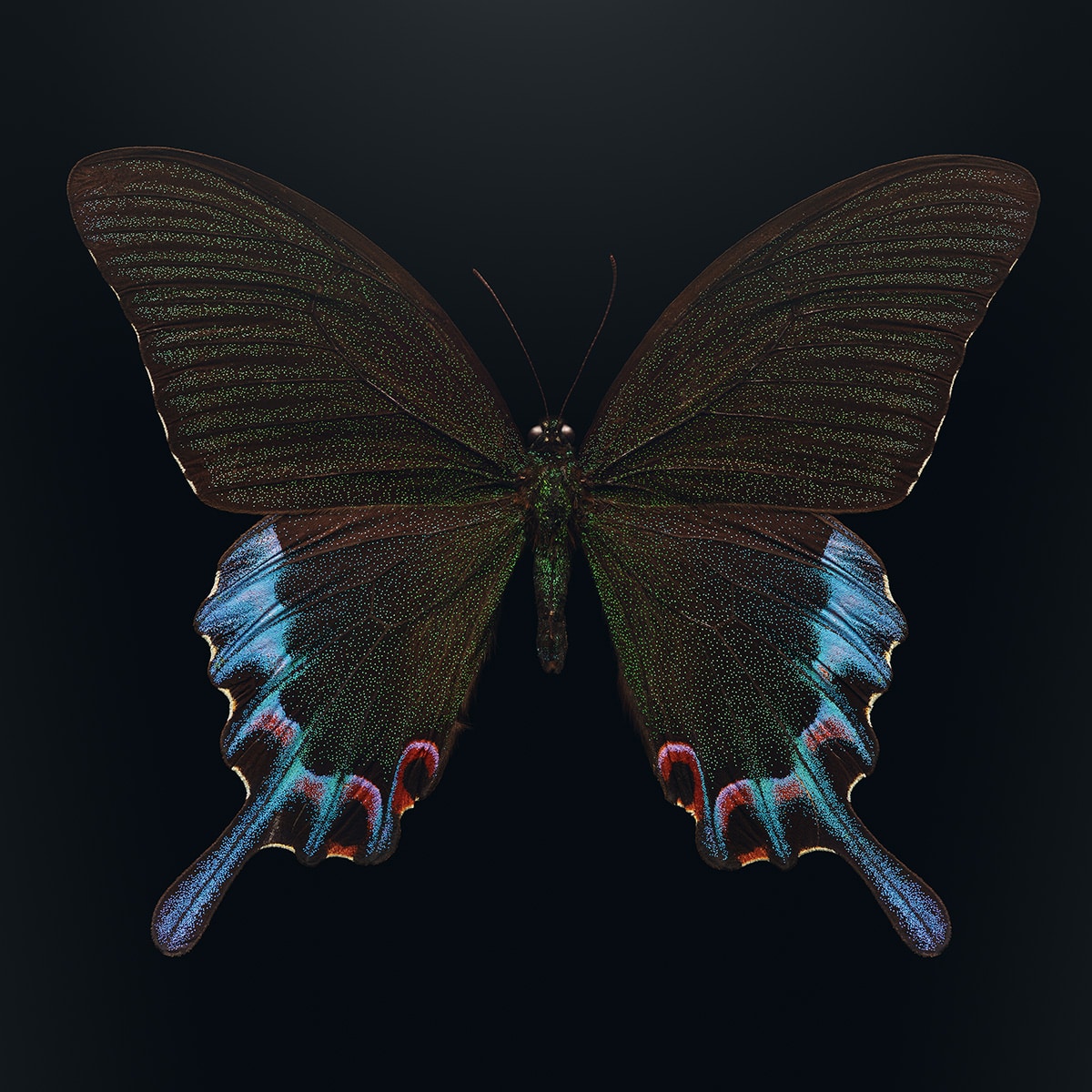
Papilio Achilles chikae chikae (Luzon peacock swallowtail)
Has conservation always been something that fascinated you, or has that evolved along with your macro photography?
I would say the conservation side of my work has certainly evolved and become more prominent since I started photographing insects. When you spend pretty much every waking hour photographing insects, it tends to take over your world; when those insects are being threatened by human influence, it makes sense to steer your work in a direction that brings attention to the issues of insect decline and biodiversity loss. Insects do not receive the attention or protection they deserve, particularly compared to mammals. I have a skill set that allows me to communicate through photography. Therefore it is my duty to help highlight these issues to the general public.
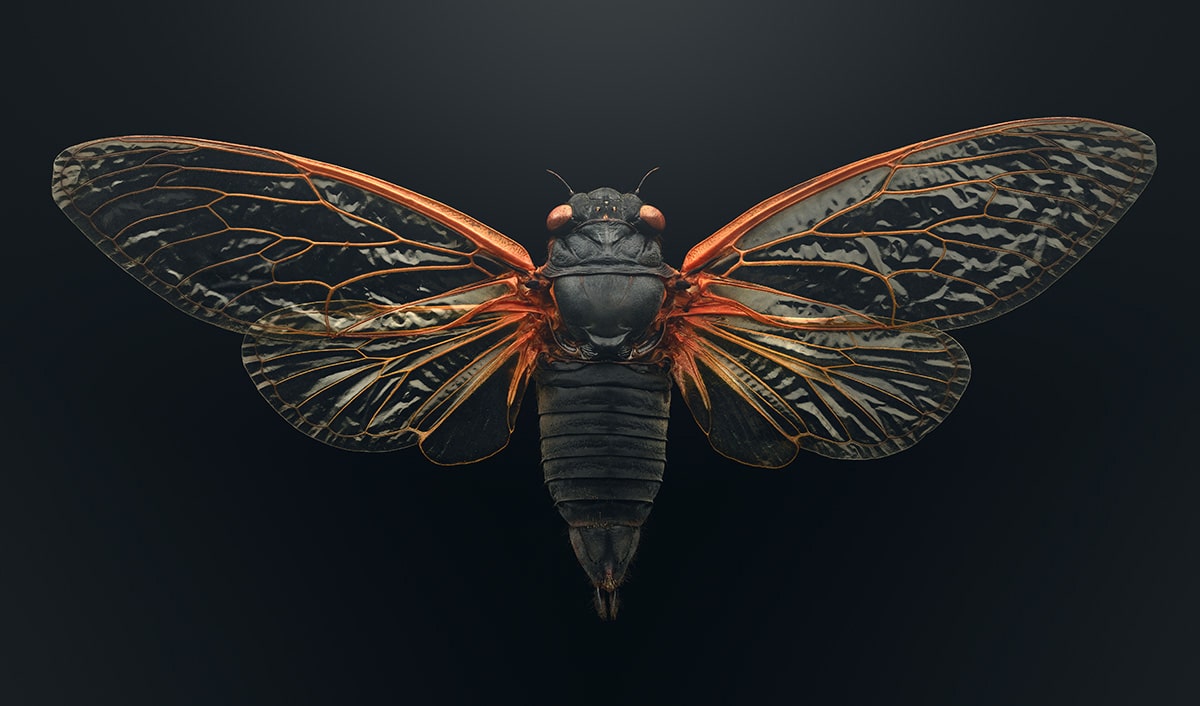
Magicicada septendecim (Pharaoh cicada)
For Extinct and Endangered, the species that you photographed were selected from the American Museum of Natural History's vast collection. How did you go about selecting what to photograph?
The specimens photographed for Extinct and Endangered were selected due to their order, conservation status, and geographical location. The majority of specimens are critically endangered, with a number already extinct—gone from this planet forever. There are, though, some specimens from breeding programs that are trying to restore species populations that are under threat of extinction, the Lord Howe Island stick insect, for example. These programs provide encouragement that threatened species can be brought back from the edge.
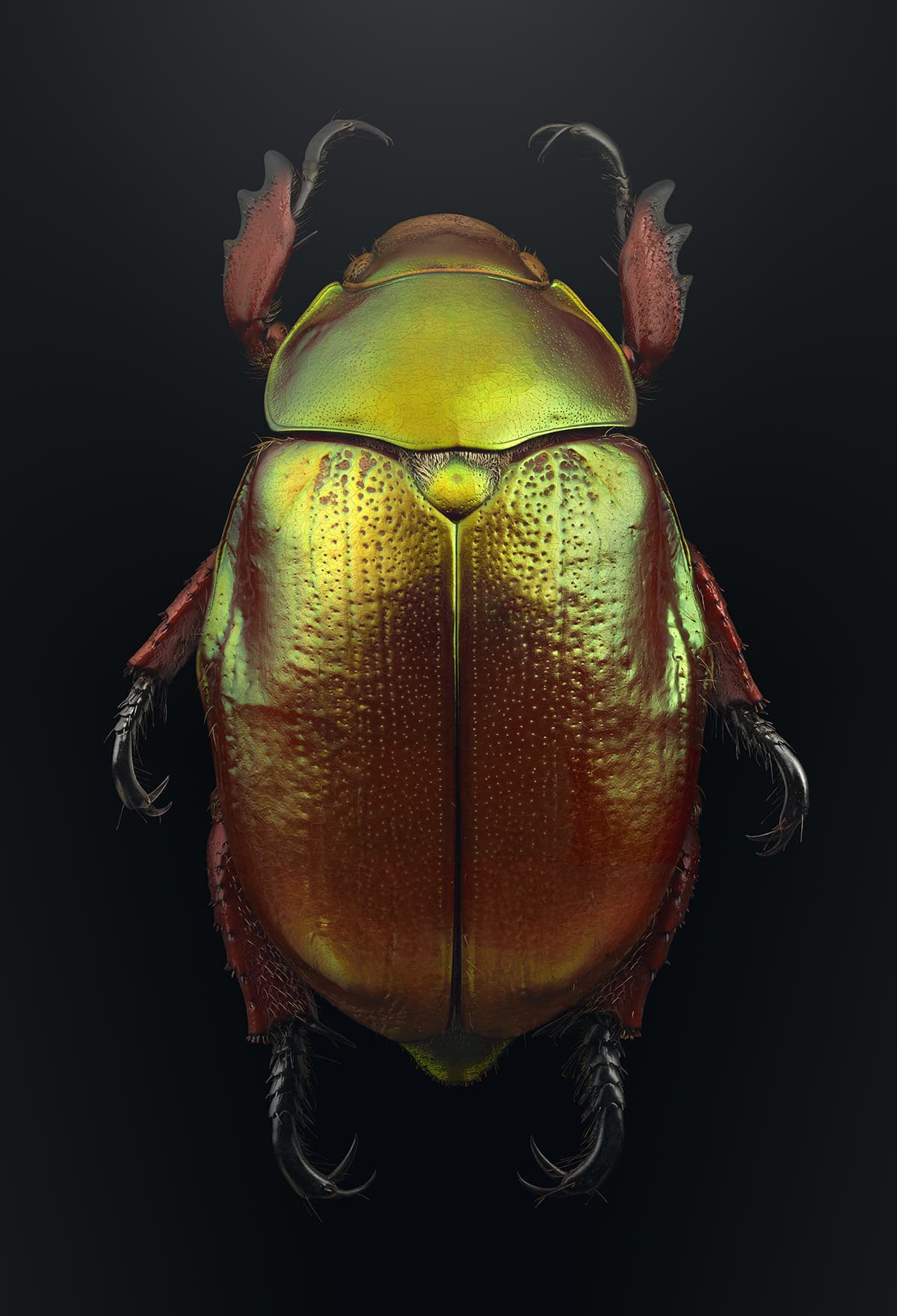
Anoplognathus viridiaeneus (King Christmas beetle)
What surprises you the most about these insects when you start photographing them?
The diversity is the most striking thing about insects for me. They adapt so well to their specific environments, and this brings about a whole range of visual interests, which as a photographer, is an ideal scenario. Every insect I photograph shows me something I haven't seen before, whether it's a different type of hair or an unusual design of mouthparts. I photograph at a level of magnification that cannot be seen with the human eye; it is actually way beyond that. Therefore, everything I photograph is new to me, and it makes me curious and eager to learn more.
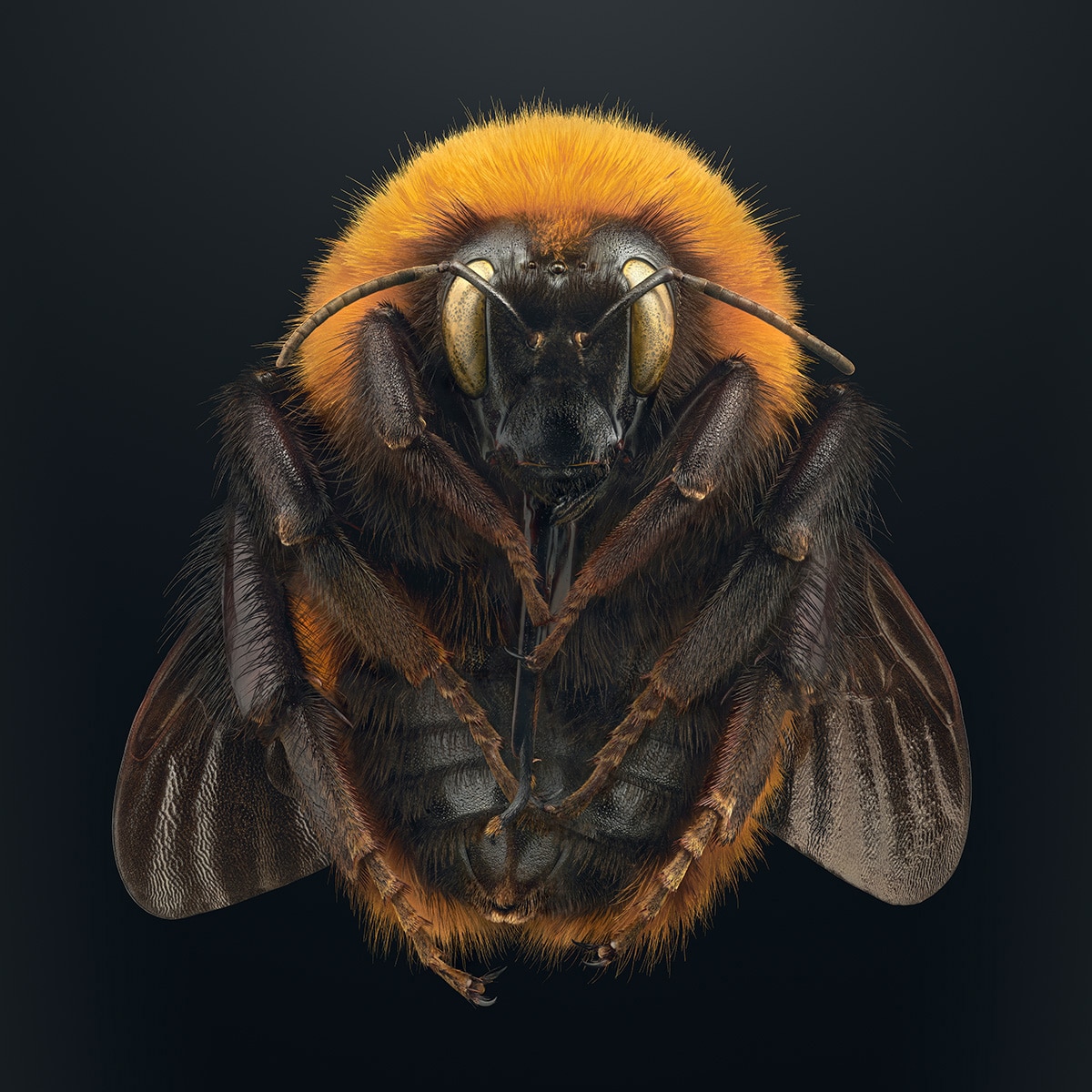
Bombus dahlbomii (Patagonian bumblebee)
Can you take us through your setup for photographing these insects and how long it takes to arrive at the final product?
The insects are photographed on a bespoke camera rig using microscope lenses. Each image is created from over 10,000 individual photographs and takes three weeks to create. When you shoot at high magnification, there is very little in the image that is in focus, and therefore we have to take many images, each with a tiny slice of focus, and squash them together to create an image that is fully focused from front to back.
I will also divide the insect into many different sections and shoot them separately, changing the lighting on each section to make it look as beautiful as possible. For example, the lighting on an eye will be completely different from a wing because it is a different shape, reflectiveness, and opacity. The lighting technique used depends on the qualities of the area of the insect body being photographed.
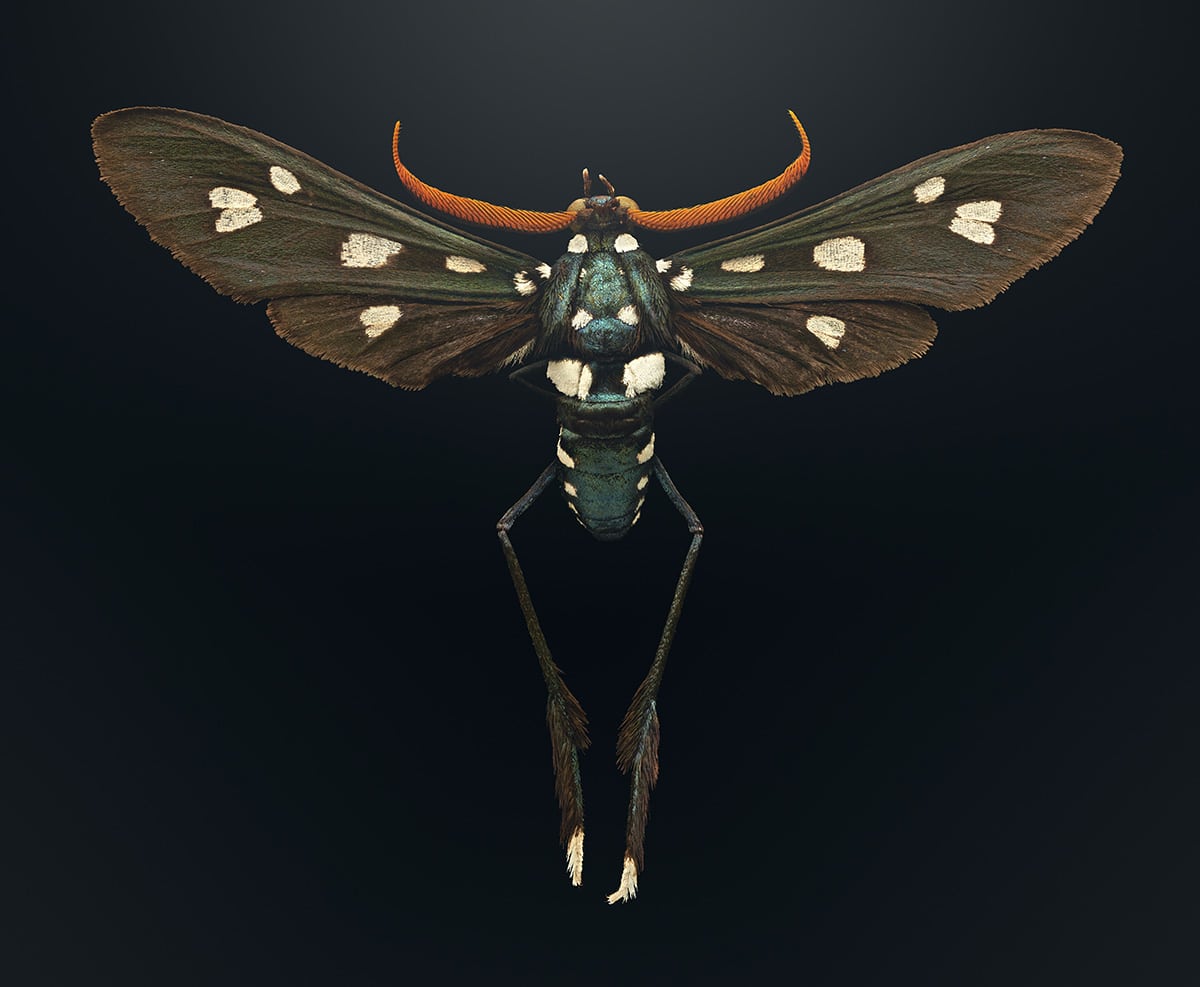
Pseudocharis minima (Lesser wasp moth)
What has been the most rewarding part of putting together this show?
The most rewarding part is seeing the children engaging with the photography and accompanying scientific text. They are curious about the giant insects and are experiencing something for the first time. The exhibition is certainly entertaining, but the photographs are also an educational tool. If the children viewing the work at the museum and online learn a little more about the importance of insects, then I would consider the project a success. They are the next decision-makers in society, and the more we can help them appreciate nature, the better.

Melanoplus spretus (Rocky Mountain locust)
How do you hope that this work can break stereotypes that we may have about insects?
We need to break away from the stereotypical mindset of insects being bad or negative. In reality, there are very few insect species on this planet that can do us any real harm, yet they are treated and portrayed as a danger or threat. They are the complete opposite. Insects do so many positive jobs for us humans, but this goes unnoticed. They pollinate our crops to supply us with food, decompose organic material, recycle nutrients in our soil….the list goes on. Humans need insects far more than insects need humans, and I think we should understand that. We should celebrate them, not portray them as the bad guys.
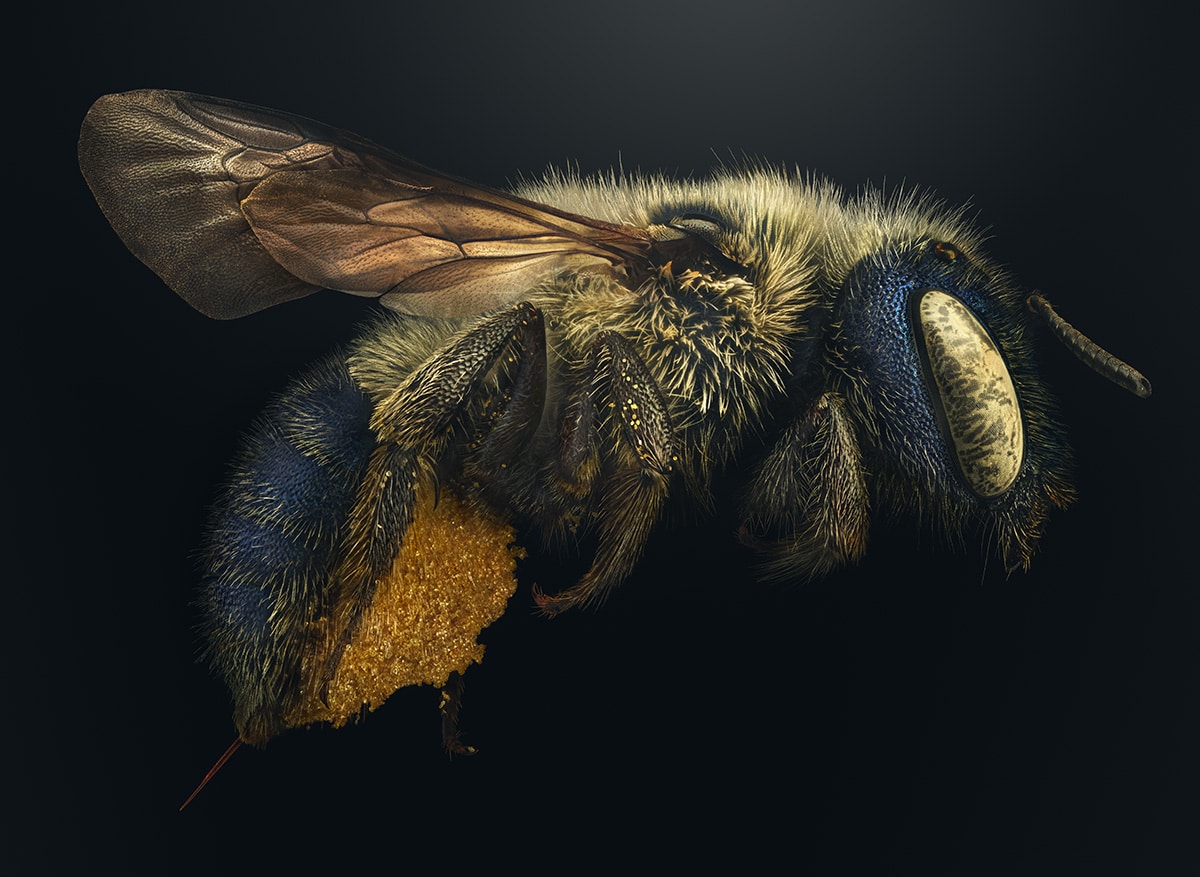
Osmia calaminthae (Blue calamintha bee)
What can we, as ordinary people, do to ensure that these species will endure and thrive once again?
There is useful information on the introduction page of the Extinct and Endangered website. There are numerous reasons why insect numbers are declining, from habitat loss to climate change, from pesticides to fertilizers. From a public perspective, just simple changes such as growing more wildflowers in your backyard or turning lights off at night can help. It is also important, though, to lobby the people in charge, whether that is your councilor or governor, whatever politician is accessible to you. Encourage them to protect wild spaces, the benefits of which we will all share, no matter what political persuasion we are.
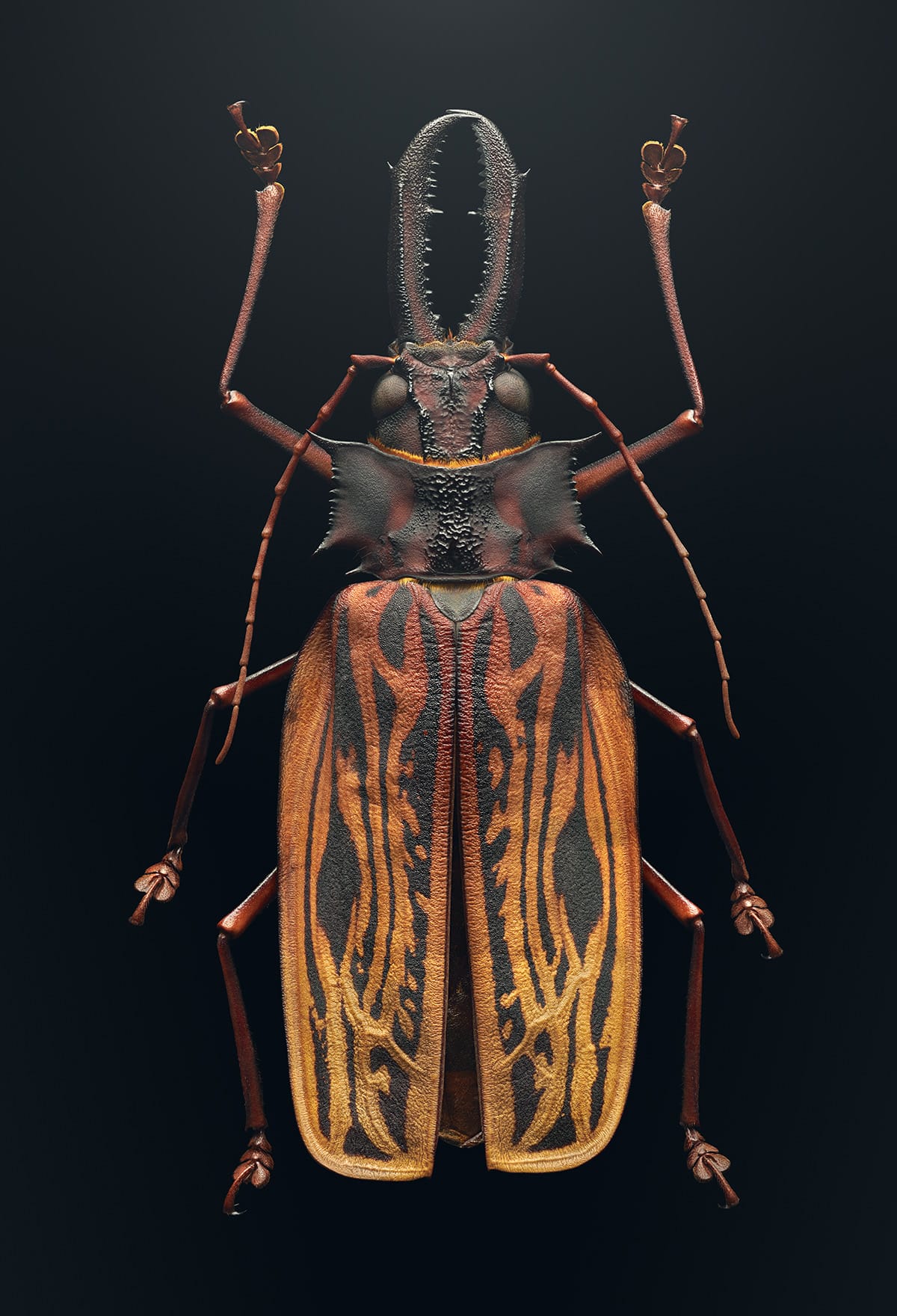
Macrodontia cervicornis (Sabertooth longhorn beetle)














































































